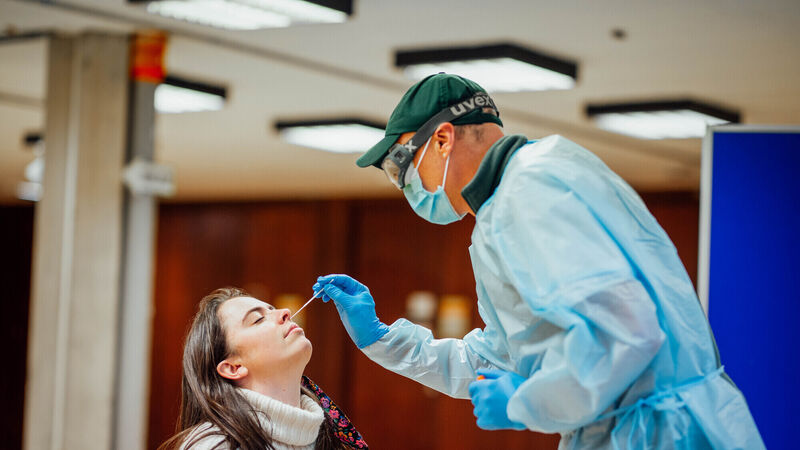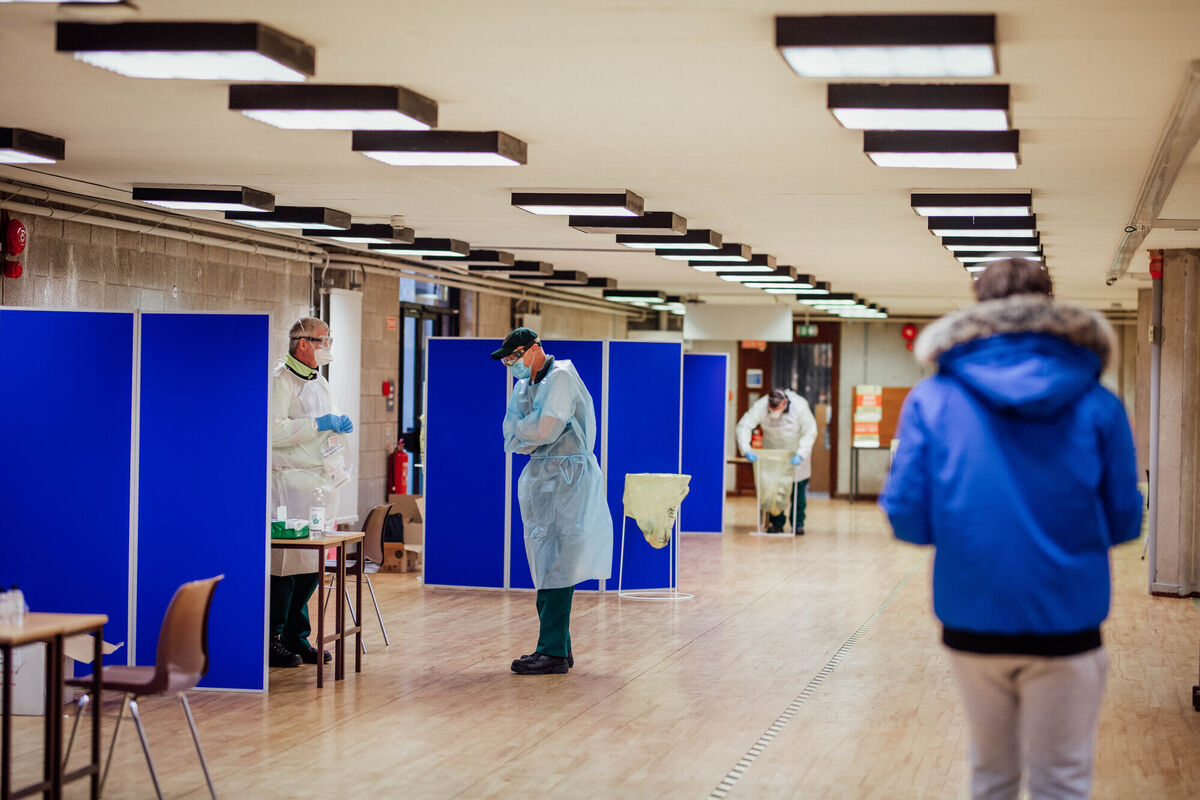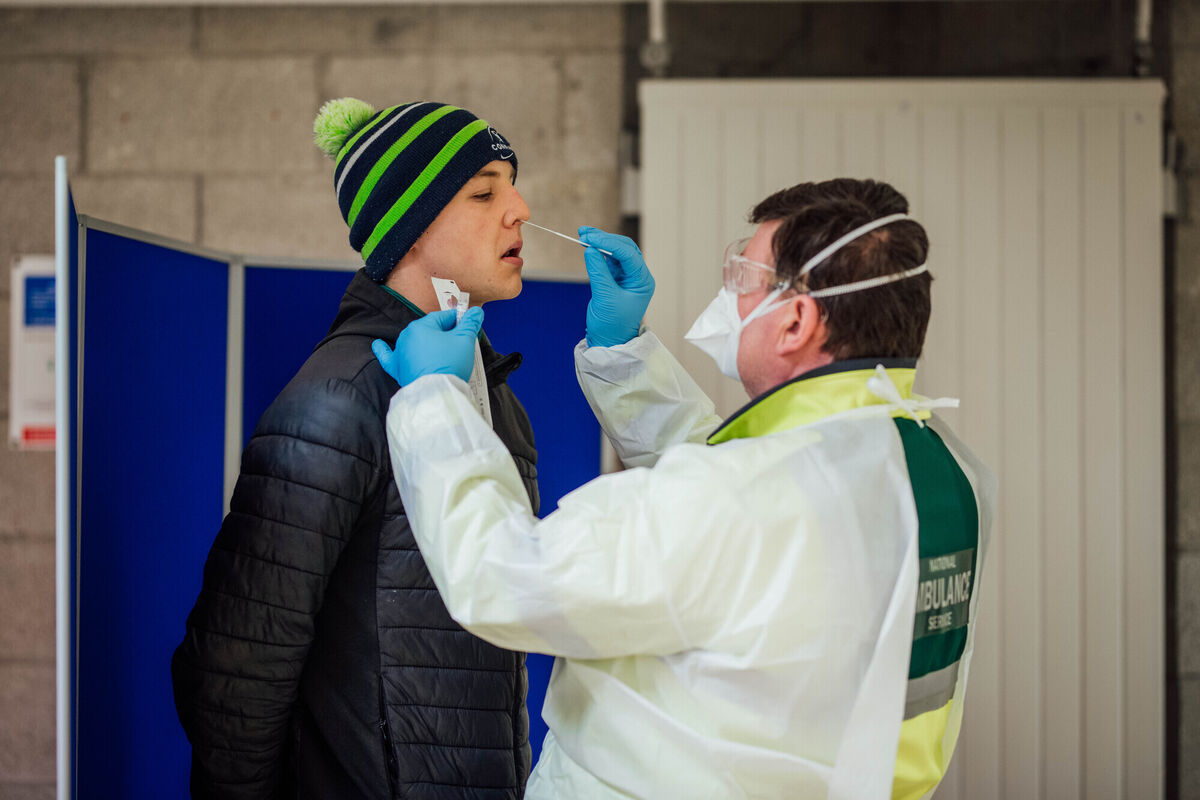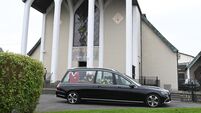University of Limerick gives its students a life-saving test

Student Caoimhe Cahill from Ardrahan, Galway, getting a test at the Covid-19 testing centre at the University of Limerick, on Friday. Picture: Brian Arthur
Towards the end of January, the HSE Department of Public Health Mid-West began to notice an emerging pattern of outbreaks in the housing estates in the environs of the University of Limerick (UL).
Clusters of cases with the same address kept popping up. “What we were seeing was entire houses of students infected, with links to other houses who were also affected,” explains Dr Marie Casey.
A specialist in public health medicine, Dr Casey works directly with third-level institutions in the region.
Public health could also see the virus begin to spread into Limerick city, and into family homes.
Due to their age, the risk of Covid-19 to students tends to be lower, but there are still risks to their health, and to their parents who are closer in age to the older groups at risk of severe illness.
“The risk of the student age group dying is very, very low,” Dr Casey said. “The thing is, this is such a transmissible virus, it only needs it to spread outwards into a vulnerable group.

“It will find them because that’s how it works. Someone could pass away [from the virus] in two or three transmission cycles out from the original case. There are things like long Covid that we still don’t fully understand.
"Another thing to remember is that in other countries where the incidence is way higher in all populations, we are seeing higher mortality in the younger age groups.”
UL will be facilitating on campus COVID-19 testing by HSE Mid-West Community Healthcare in a bid to prevent further transmission among the student population. https://t.co/HGnyoRge7U
— University Of Limerick (@UL) February 9, 2021
She said when there is a large number of infections, less frequent events will start to occur.
"If there’s a one in a thousand chance, if you have 1,000 cases you will see one or two deaths.”
This week, free mass testing began on the university’s campus. All students were invited to attend, regardless of whether or not they have symptoms of the virus.
“What we're doing in UL at the moment is a process called case finding. When the numbers get lower in the population in general, we can go more aggressively after certain outbreaks.
"By offering mass testing, we are trying to see if we can find any more cases that have been undetected so far, and so we can eliminate any other chains of transmission.
“As we face into restrictions maybe being relaxed, we have to put out all the fires that we can at the moment, and chase these chains as much as we can.”
UL deserves kudos for this approach, according to Dr Casey. “What we are doing there is really innovative.”
Ahead of the Christmas break, UL students were also invited to take part in mass testing before they headed home for the break.
From this, the UL IT department developed a booking system for students that integrated into the HSE’s own booking system.
“This time around, we were able to mobilise that really quickly. We were able to have that up and mobilised in 24-hours.”
UL has also shared this system with other institutions in the region.
“UL has really supported the rapid testing and has committed resources to helping us with that as well, which is brilliant. It's particularly important with college outbreaks where you don't know the names of the people that you want to test,” Dr Casey added.

In general, tracing outbreaks among students proves difficult for public health for a number of reasons.
Across the country, libraries and lecture halls are closed, and campus activities have been extremely curtailed due to Covid restrictions.
But on-campus transmission isn't the main issue, Dr Casey explained. “The main issue with college outbreaks is actually people studying together and socialising together off campus, and that's really hard for colleges to control.”
It can also be quite difficult to identify cases linked to students, she added, because a lot of students have their home address as their term address.
“Sometimes a university isn’t aware of cases or they’re not sure where they’re actually living as well, if they’re living locally. From a public health point of view, that makes it very complicated.
“There’s also a mix of on-campus and off-campus accommodation mixed in throughout the housing estates around an academic institution, and that can be very hard to pull out who are the students, and who are not. It all just adds another layer of complexity and takes a lot more time to put together the pictures.”
Due to their age, students are also less likely to have symptoms of the virus, or symptoms that are noticeable or that are severe enough to make them want to have a test.
“That means they are less likely to be picked up in the first place," said Dr Casey. “If you look at a nursing home outbreak, they're very contained. There's one location, you know who your target population is, you know the population who is at risk, because they will live there, or they will work there.
“If I have to deal with a nursing home outbreak, I would be given by the nursing home a list of the people who work there and all the people who live there fairly quickly and arrange testing for them and move on very quickly. Whereas it’s far more complicated with the student population.

“You can have a cluster spreading out quite quickly from each other from a social event. You can have a lot of people together at one time. These clusters start to emerge outwards afterwards from that, and it can happen quite quickly as well.”
It’s not about blaming students, Dr Casey added. “We all have a risk profile for this virus.”
However, inadvertently, they can create a spread of the virus.
“Students are a highly mobile population compared to the rest of the population,” she explained.
“They may also have a part-time job and they may also be socialising with one another,” she added.
Socialising can mean house parties, but it can also mean much smaller gatherings to study or meet-ups between two households, to watch TV and eat a takeaway, which are much more common.
The advice for students is to be conscious of the number of contacts they have, and the number of networks they are connected to.
“They have to bear that in mind, the effort should be to minimise those as much as possible. The social situations are something they have control over, that are optional to minimise as much as possible, especially large, large gatherings.”
“I suppose the other thing, too, is to give thought to the amount of times they are travelling back home at weekends as well, to give thought to minimising that,” Dr Casey added.
“Doing that frequently will obviously increase the risk. You've got to think to that most students’ parents are in the older age groups, so they would be at risk of severe illness.”
Another important step is to set themselves a lower threshold for attending a Covid test.
“The test is free, they can phone their GP who will arrange it for them. They need to take that up far more frequently if they feel a bit off.”
lives in off-campus accommodation with four other students, who all frequently interact with each other, with no masks or distancing. They are studying remotely with no physical on-campus classes, tutorials, or practical lessons. They consider this household their "social bubble". Student A works in a small shop most evenings.
lives in a neighbouring off-campus housing estate with three other students who have similar social interactions. Student B’s partner is a young healthcare worker who lives in another house.
Student B visits Student A’s house every few days to catch up and chat. At this time, household visits are allowed, though public health advice is to minimise social interactions as much as possible.
Student A decides to host a small gathering of everyone living in the two houses, where they will order food and watch a soccer match on television in the living room. Student B and her housemates were wearing masks at first but put them away when the food arrived. They sit close together and the small gathering lasts about four hours.
Student B develops a small cough the next day, and arranges a swab at a local testing centre. Covid-19 is detected in Student B and she receives the result via text two days later. She receives a phone call from the contact tracing centre the next day, asking for her close contacts in the 48 hours before her symptoms began. She has identified the six other people at the social gathering and her partner.
The following day, the six close contacts are contacted and booked for a swab at their local testing centre that evening. They all test positive. As a result, Student A has to self-isolate and inform contact tracing of his close contacts at his workplace. Because his workplace is small, all staff have been identified as close contacts and the workplace has to close for at least 14 days.
Student B’s partner has been identified as a close contact, and later tests positive. However, her partner may have worked while infectious at the healthcare setting, and a number of healthcare workers must now be excluded from work and self-isolate due to being identified as close contacts, leaving the healthcare facility short-staffed.










